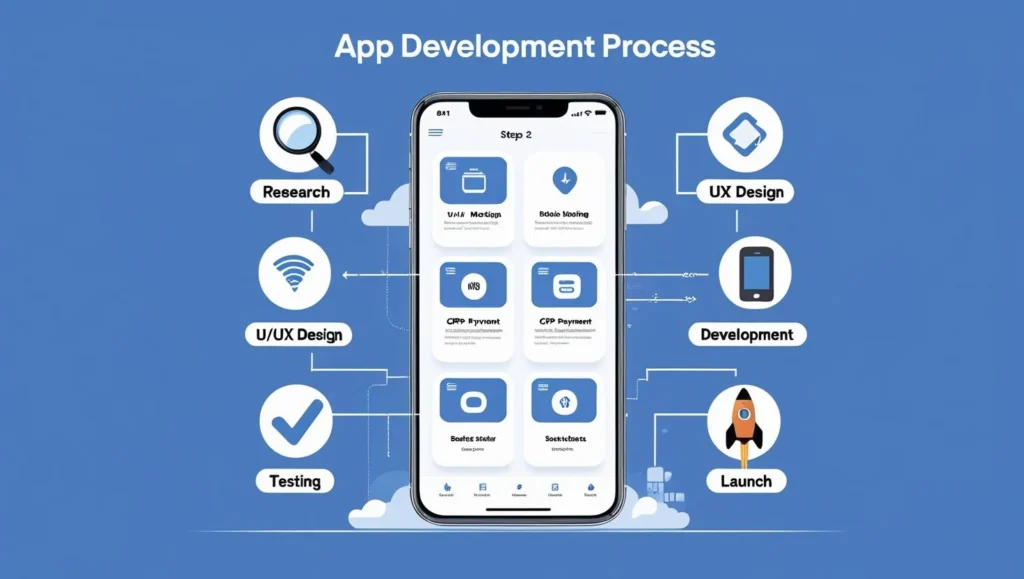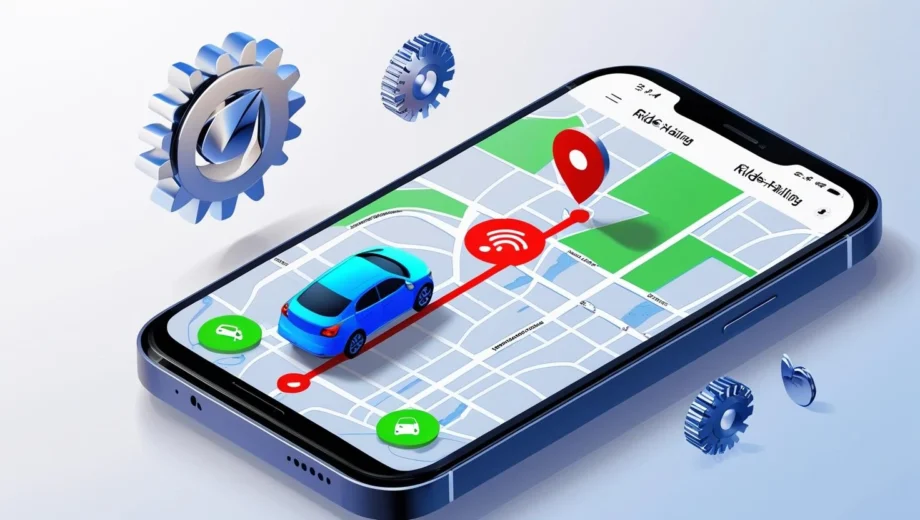The global ride-sharing market is thriving, led by innovations from pioneers like Uber. For startups and entrepreneurs across the USA and Asia, the ambition to build app solutions similar to Uber has never been stronger. With millions relying on digital transport platforms daily, the opportunity to develop an Uber-like app is both lucrative and scalable.
To build app solutions that rival existing giants, businesses must understand more than just technology—they need a strategic, phased roadmap. From choosing the right tech stack to designing intuitive user interfaces and integrating payment systems, building an Uber-like app involves a series of mission-critical decisions.
This comprehensive app development roadmap like Uber will guide you through each step—from feature planning and hiring developers to buying clone scripts and meeting regional regulations—ensuring you're equipped to launch a successful ride-sharing platform.
Understanding Uber-like App Development
To build an app like Uber, startups need a roadmap that balances tech, user experience, and scalability.
Core Components:
- Real-time GPS tracking for riders and drivers
- Ride matching algorithms to optimize routes
- Secure payment gateways for smooth transactions
- User management: separate profiles for riders and drivers
- Rating systems, push notifications, and analytics dashboards
Technology Essentials:
Success hinges on leveraging the right tools and architecture:
- Frontend: React Native or Flutter for cross-platform apps
- Backend: Node.js, Python (Django), or Java with WebSocket support
- Database: MongoDB, PostgreSQL, or Firebase for real-time data
- Cloud services: AWS or Azure for scalability and reliability
- Mapping integrations: Google Maps or Mapbox
- Push & in-app messaging, with in-app chat and SMS fallbacks
This app development roadmap like Uber ensures seamless performance and high user satisfaction.
App Development Roadmap Like Uber: Step-by-Step Guide to Build App
Follow this 6-stage process to build a competitive ride-sharing platform:

1. Conduct Market Research & Define Target Users (~80 words)
Identify demographic and regional factors in your chosen markets:
- Survey both riders and drivers
- Evaluate existing competitors and service gaps
- Analyze behavior differences between USA and Asia, like rider preferences, fare expectations, and regulatory hurdles
A thorough market analysis underpins decisions on features, pricing, and scaling strategies.
2. Design UI/UX for Riders and Drivers (~80 words)
Create clear, intuitive interfaces:
- Rider flow: signup → search → ride → payment → rate
- Driver app: ride alerts → navigation → earnings management
- Use clean designs, easy-to-read maps, and bold CTA buttons
- Localize language, units, and visuals for each market
Prioritizing good UX is essential in this app development roadmap like Uber.
3. Develop Core Features (~170 words)
A. GPS Tracking & Ride Matching:
- Use WebSockets for real-time GPS updates
- Match drivers and riders via proximity algorithms
- Show ride ETA, route mapping, and fare estimates
B. Payments:
- Integrate gateways: Stripe, PayPal, RazorPay (India), or Alipay (Asia)
- Support in-app wallets, promo codes, and multi-currency billing
C. User Profiles & Ratings:
- Store profiles securely with OAuth login options
- Implement rating systems to ensure service quality
D. Push Notifications:
- Notify users about ride status, driver location, and promotions
Integrating these components establishes the MVP for your Uber-like service.
4. Build Scalable Backend Architecture (~120 words)
Your infrastructure must withstand surges in demand:
- Use microservices and REST APIs
- Incorporate messaging with RabbitMQ or AWS SQS
- Choose the right database strategy (e.g., horizontal scaling)
- Implement caching (Redis) and load balancers
- Host on a cloud platform like AWS or Azure for auto-scaling
This robust structure ensures consistency with your IT cloud migration strategy roadmap and sets you up for global expansion.
5. Testing, Deployment & Market Launch (~120 words)
Ensure readiness before going public:
- Conduct unit, integration, and end-to-end tests
- Stress test with HABENCH or Gatling
- Deploy using Kubernetes or serverless frameworks
- Run pilots in select cities (e.g., San Francisco, Jakarta)
- Collect user feedback and optimize post-launch
Implement a CI/CD pipeline, and launch with a buzz in both USA and Asia.
6. Post-Launch Updates & Maintenance (~80 words)
Once live:
- Monitor KPIs: ride frequency, cancellations, and driver utilization
- Push frequent app updates
- Add new features: ride scheduling, corporate rides, loyalty programs
- Address bugs quickly and communicate updates clearly with riders and drivers
Iteration is a vital part of your app development roadmap like Uber.
Buying Clone Scripts: Pros and Cons
A fast-track option is to consider Uber clone scripts.
Pros:
- Quick launch—often in weeks, not months
- Cost-effective for MVP and early testing
Cons:
- Limited customization
- Security and compliance issues if not audited
- Potential legal issues with feature similarities to Uber
Choose clone scripts only if they can be tailored, audited, and securely deployed.
How to Build App Like Uber? Best Practices
Here are key decisions integral to your roadmap:
Tech Stack:
- Use Node.js for real-time event handling
- Choose React Native for efficient cross-platform builds
- Favor PostgreSQL + Redis for performance
Security & Compliance:
- Follow PCI-DSS for payments
- Encrypt user data and apply token-based sessions
- Use in-app SOS features and geo-fencing for safety
Product Feedback Cycle:
- Use analytics to understand usage
- Run A/B tests for UI improvements
- Gather direct feedback from early adopters
These best practices ensure your platform remains agile and relevant.
Navigating Clutch and Upwork for Developers
Use these platforms to hire experienced teams:
Clutch:
- Rated agencies with ride-sharing portfolios
- Read client reviews and project comparisons
- Assess match with your requirements and budget
Upwork:
- Hire freelancers skilled in Uber-like tech
- Look for profiles with high analytics and task-oriented tests
- Use milestone-based contracts and integrate them through Trello or Jira
Structured hiring is essential for executing your app development roadmap like Uber.
Geo‑Targeted Considerations for USA and Asia
Expand successfully by adapting to regional markets:
- USA: Comply with regulations, integrate Apple Pay and Uber-like features like tipping
- Asia: Add support for cash payments, local languages, high-traffic navigation, and Uber-like parcel services
Account for local user behavior and market trends at every step.
Explore the official Uber Developer Platform to understand how Uber structures its APIs and integrations for ride requests, payments, and trip tracking.
External Resources & Additional Learning
For deep dives into ride-sharing technology:
- Read TechCrunch and Crunchbase coverage of Uber’s expansion
- Study mobility whitepapers from providers such as Boston Dynamics
- Explore local startup trends through agencies listed on Clutch and Upwork
These sources enhance your understanding at each phase.
Internal Resource
Explore our complementary guide related to digital infrastructure—IT Cloud Migration Strategy Roadmap that underpins scalable backend readiness for apps like Uber.
Conclusion
Creating a ride-sharing platform requires more than ambition—it requires structure, tech expertise, and market understanding. By following this roadmap, you’re not only learning how to build app solutions like Uber but also preparing to adapt them to market-specific needs in the USA, Asia, or anywhere globally.
Whether you choose to start with a clone script or build app architecture from scratch, the key is a step-by-step strategy, ongoing testing, and customer-focused design. From hiring on Upwork or Clutch to understanding regulations and payment integrations, this guide equips you with actionable steps for app development success.
Startups that plan early, iterate fast, and invest in the right team will be in a strong position to enter and lead in the ride-sharing space.








